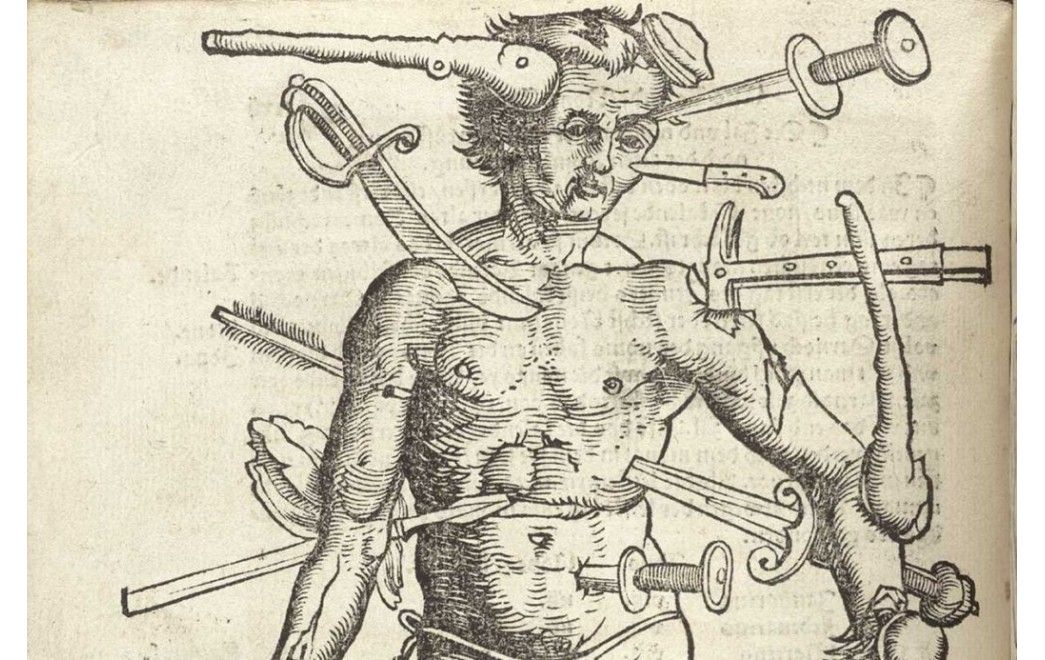Safety during HEMA duel. How to evaluate properties of HEMA gear
Safety during HEMA duel. How to evaluate properties of HEMA gear?
As a young discipline, HEMA is still on its way of making own definition. You probably already know that there are a few aproaches to this issue. Different sources give different answers – both on what HEMA actually is, what are its aims, and how its future will look like. Sometimes these answers are virtually opposed.
To me, even more difficult to determine and organize are proper requirements relating to HEMA gear, despite the fact that this is an issue I’m dealing with every day. Still, I believe it is worth to undertake it – HEMA community seems to grow fast, just like HEMAists skills in sword fighting.
Safe HEMA equipment – what does it mean?
If you were to ask about it a regular HEMA protection user, he would probably mention high puncture resistance – especially against a broken blade. Another important point will be a pain reduction during hits and minimizing a risk of injuries; this means, a proper amortization.
These issues seem to be obvious and mostly accepted in HEMA community. But what does it mean in reality and how to achieve it?
How to choose HEMA gear? Key features for users
Years of experience gave me the chance to analyze this area of the HEMA market. Currently, the most important features of HEMA gear for customers seem to be:
- price,
- additional features of a product,
- brand opinion,
- ways of making an order,
- safety.
Naturally, the order of these attributes may differ depending on a person. The product itself can be cheap or expensive, simple or with a range of extra features raising the price. Order realization sometimes is delayed, and contact with producer may be easier or more difficult.
However, customers often mythicise safety and protection. They evaluate thickness of amortization – this means, how painful the hits will be. And it is worth remembering that it also depends on user’s experience – amortization in HEMA increases by lowering the mobility and comfort of use.
Basically, there is a choice between HEMA jackets and pants of 350N or 800N puncture resistance, or those where manufacturer doesn’t declare such properties.
What exactly does this mysterious unit mean? Do more Newtons always come with better quality of HEMA clothing? Are all Newtons the same and who gives a permission to use these symbols?
Market requirements and HEMA equipment manufacturers approach
As SPES Histfenc, one of the first manufacturers of equipment dedicated to HEMA, we decided to draw output of the closest discipline – sport fencing. Are you wondering why?
Currently there is no entity which would be able (financially, by time, but also by responsibility) to develop official HEMA equipment requirements. Those should be predicated on the study of forces which come up during duels with various arms, but also body parts which require protection, ways of this protection, and preventing possible danger during fight (like head and knuckle injuries, broken weapons, etc.).
So, how many Newtons is needed in HEMA for proper protection against puncture? Another question is what kind of amortization should be provided by HEMA and on which body parts? This discipline has never had such requirementsand they haven’t been established till now. I hope that eventually they will come to existance. That’s why we decided to use FIE rules (Fédération Internationale d’Escrime – International Fencing Federation) – if there’s nothing better, lets make a use of similar discipline. And 800N puncture resistance (according to FIE test) is very hard to achieve.

Amortization in SPES HEMA gear – new VS old technology.
This is also a reason of the same standards of puncture resistance (350N and 800N, like in FIE), requirements on the lack of any slits between protective layers (invisible naked skin), or growing popularity of bladecatcher. Coming back to amortization, sport fencing doesn’t have such requirements, but HEMA community see it as a basic features in HEMA (first versions of FG jacket and AP jacket functioned mostly as amortizable clothing).
Newtons and their role in HEMA gear
What does the famous Newton unit mean? Certificates in this matter are a proof of using a fabric tested in proper laboratory accredited by FIE. There’s only few of these places in the world. Producer of such fabric gets a certified and test raport which proves that fabric meets the requirements of 350 or 800 Newtons puncture resistance.
SPES tests its fabrics since 2015. This means that, in a form of proper image, we give a guarantee to our customers that fabric of a product was examined in proper laboratory. It has a role of information for interested customers, but there’s no official guidelines in HEMA for this sign and who can use it.

AP 350N HEMA Jacket & Hussar 800N Women’s HEMA Jacket
Do you know what you are paying for?
Currently there’s no organization, federation, association, or club which could check how producer defines the protective features of his HEMA equipment. This means that a manufacturer doesn’t have to make tests on puncture resistance accoridng to the EN 13567 norm. One can work on norm for sweaters or jumpers, regular clothing, which is tested by its stretchability, not puncture resistance. Such test is static, not dynamic; made with a ball, not spike. Result, however, is still given in the N unit.
Thus, there is a chance that producer marks his HEMA clothing in a ways his customer wants. If nobody checks it, there are no consequences like disqualification from tournament. Still, let’s remember it’s possible customer may not be aware that safety matters are being ignored by a producer.
And for me this was the main reason to write this post. Every HEMAist should be aware that 800N fabric has to be twice as thick and twice as heavy as 350N fabric (thus, at least twice more expensive). And when a seller sends an 800N jacket in price of 350N… something is probably wrong. But such situations actually take place. As you can see, producers’ approach to the N unit may differ and be not necessarily honest.
Not only Newtons – other determinants of safety in HEMA
The matter of amortization seems to be even more difficult. Nobody really knows how to measure it and how to make tests. In practice, we rely mostly on customers’ feedback and inside tests. Still, we are planning to evaluate amortization in HEMA equipment by so called drop tests. This means, what percentage of energy a layer absorbs. We make inside tests of this type for a long time. Still, we haven’t found a widely available test for other branches which could be carried out in HEMA.
Don’t forget about knuckles and bones. These can be protected against breaks and injuries in various ways. I believe that best results are given by plastic covers on amortization layers. It’s worth to remember about other places exposed to hits. This means, sides of elbows, knee joints, sensitive parts of forearms and shins, shoulders, ribs, and a neck. First, a proper entity would have to decide which places and in what way should be protected. Later, protective properties should be measured.
I’ll try to write more about parameters and ways of evaluating later, in other post.
Regulations needed in HEMA
I believe that we should aim for a common agreement on features and parameters of protective gear for HEMA. It requires manufacturers and HEMA organizations to draw together in common interest. This is, development of HEMA and lowering the risk connected with doing it.
I would like to underline that I am open for cooperation with anyone who wants to increase safety level in HEMA. I can share my knowledge and thoughts in this field. Finding at least several producers and organizations will let us take these issues seriously, not only in an abstract way.
Since 2007, the year we have made the first jacket dedicated to HEMA with Fechtschule Gdańsk, level of safety has grown significantly. Regular cooperation with community and meeting its expectations in terms of HEMA gear causes lower number of injuries during tournaments. Nonetheless, there are still some doubts. We should try not only to upgrade HEMA equipment and increase its availability. It should also meet the highest requirements of commonly accepted qualities.



Leave a Reply Cancel Reply